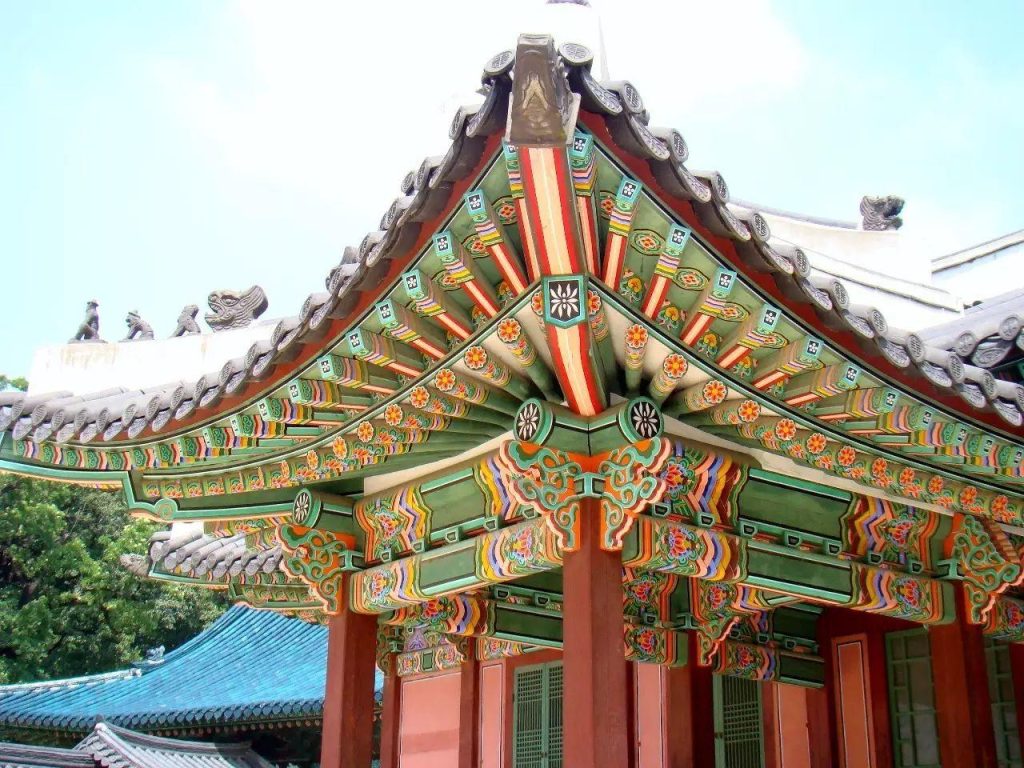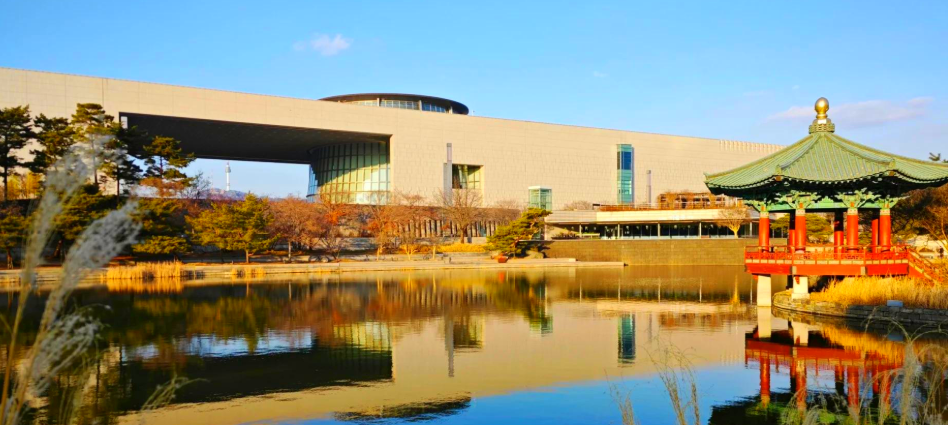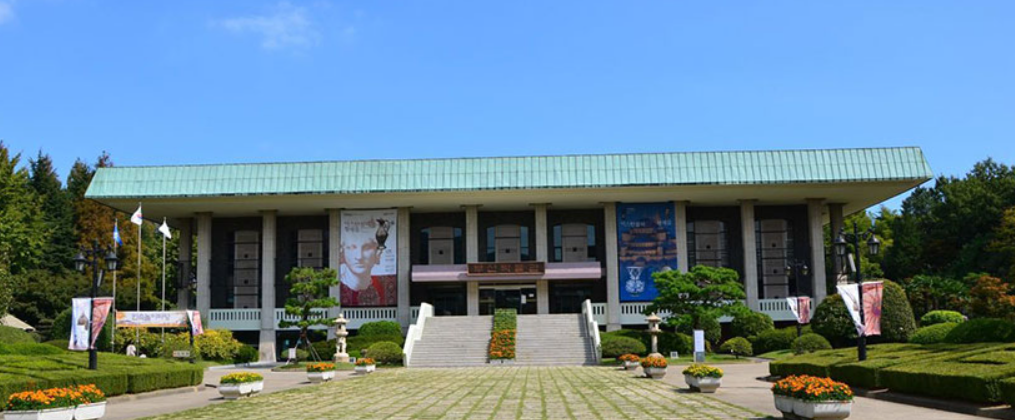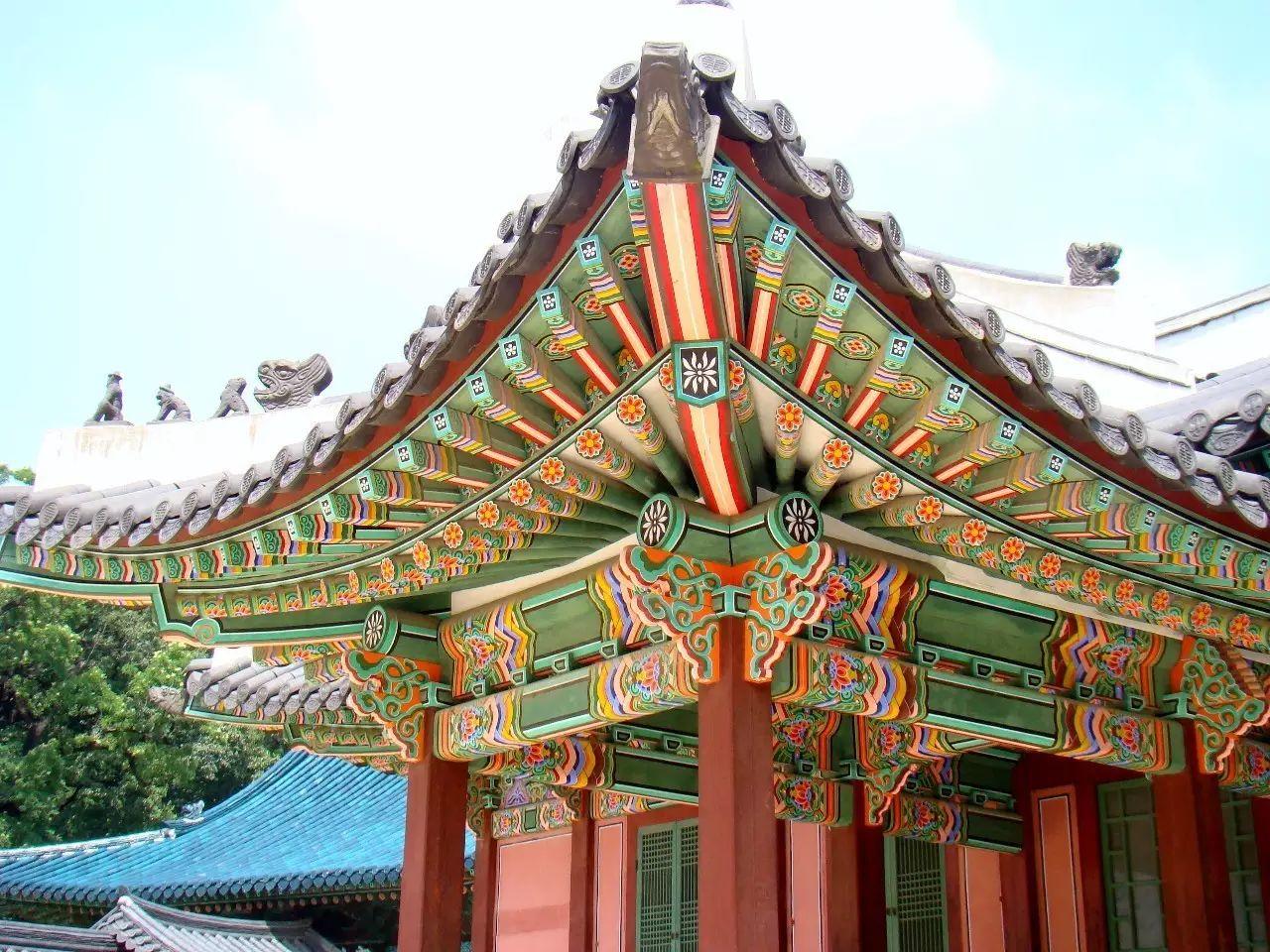When it comes to traveling to South Korea, do you only think of shopping and delicious food? In fact, apart from these, there are many interesting places in South Korea waiting for us to explore. This country, deeply influenced by traditional Chinese culture, has many unique cultural features. There are some palaces and museums that represent traditional Korean culture in places like Seoul, Busan and Gyeongju. Let’s go and have a look together next ~

A must-visit place to learn about Korean history and culture
Gyeongbokgung Palace, Seoul
Gyeongbokgung Palace is one of the most important and worthwhile attractions in South Korea, and it is a must-visit place to learn about the history and culture of South Korea. This is the first palace built during the founding period of the Joseon Dynasty and has a history of over 600 years. Gyeongbokgung Palace has witnessed too many historical changes and political shifts. Although it was burned down in 1592, after its restoration, one can still feel its former glory.
Although compared with the Forbidden City, Gyeongbokgung Palace is rather small and cute, it also has a more serene and elegant charm. The buildings inside the palace are highly characteristic of Korea, and the scenery is also a feast for the eyes. If the timing is right, you will also witness a shift change ceremony with distinct Korean characteristics and can take free photos with the soldiers changing shifts. In addition, Gyeongbokgung Palace houses the National Ancient Palace Museum and the National Folk Museum, which are also well worth a visit.
Address: 22 Saji-ro, Jongno-gu, Seoul
Transportation: Exit 2 of Gwanghwamun Station on Line 5 and walk for 10 minutes. Exit 5 of Gyeongbokgung Station on Line 3 and walk for 5 minutes.
Tips: The job change ceremony is not held all the time. During the period from 10:00 to 15:00 from March to June and from August to November each year, there will be a job change ceremony at every full hour.
A palace presenting traditional Korean natural landscapes
Changdeokgung Palace, Seoul
If you want to experience the essence of traditional Korean gardens, Changdeokgung Palace in Seoul is a must-visit. This place was once a secondary palace of the Joseon Dynasty and later became the main palace. Now it is the best-maintained complex among the many royal palaces in Seoul. The buildings within the palace have very well preserved the traditional historical charm of Korea. The natural and artificial landscapes complement each other, presenting an ancient and distinctive atmosphere.
Some people also say that Changdeokgung Palace is more worth visiting than Gyeongbokgung Palace. Although this statement is a bit exaggerated, when you come to the back garden of Changdeokgung Palace – the Back garden, you will know that it is indeed so. The back garden, which covers three quarters of the total area of Gyeongdeokgung Palace, is one of the most beautiful and representative gardens in South Korea. It retains many of the beauties of Korean classical gardens and is also the top World Heritage Site in Seoul. In conclusion, when traveling to South Korea, you mustn’t miss this place.
Address: 99 Gurgo-ro, Jongno-gu, Seoul (Gunnong-dong)
Transportation: Take Subway Lines 1, 3 or 5 to Jongno 3-gil Station and exit through Exit 6. Then walk for about 10 minutes. Or get off at Anguo Station on Line 3, exit through Exit 3 and walk for 5 minutes to reach the destination.
A great place to understand the essence of Korean culture
National Museum of Korea, Seoul

If you want to understand the cultural essence of a country, museums are definitely a great place, and the National Museum of Korea, the largest and most authoritative museum in South Korea, is a great place to learn about Korean culture. The museum houses 220,000 rare items, covering fields such as archaeology, history, and fine arts. Moreover, the museum also features a planned exhibition hall, a children’s museum, and an open-air exhibition hall. In the children’s museum, children can participate in a series of experience activities and games, which is also very nice.
While hosting domestic and international exhibitions, the museum also attaches great importance to collecting and preserving various relics, conducting investigations and research, distributing academic materials and providing international cultural exchange activities, etc. Museums are not only bases for education but also environmentally friendly cultural Spaces. It is worth mentioning that such a wonderful museum is free of charge. As long as you have enough time, you mustn’t miss it.
Address: 137 Seobongkour-ro, Yongsan District, Seoul Special City
Transportation: You can choose to take Metro Line 1, 4 or Central Line to Ercun Station and exit through Exit 2. Walk 150 meters in the direction of Longshan Family Park.
Experience the rich Korean atmosphere
Seoul · Hanok Village
When you come to South Korea, don’t miss the Hanok culture here. That strong Korean flavor might be more interesting than Korean cuisine and TV dramas. Bukchon Hanok Village is a great place to experience Hanok culture. It is a traditional Korean residential area with a history of 600 years and is still home to residents to this day. When you come here, you can first visit the Bukchon Cultural Center, and then explore the Eight scenic spots of Bukchon in Bukchon to experience the charm of the Hanok architecture itself and the daily life of the surrounding residents.
However, with the booming tourism in South Korea, more and more people are visiting Bukchon Hanok Village. Besides here, Namsan Valley Hanok Village is also a great place to visit. There are relatively fewer people here. There are many traditional experience activities, and sometimes you can even see traditional Korean weddings.
Address: Bukchon Hanok Village: Gaye-dong, Jongno-gu, Seoul. Namsan Valley Hanok Village: Around 84-1, Bi-dong 2-gil, Jung-gu, Seoul.
Transportation: Bukchon Hanok Village: Take Subway Line 3 to Anguk Station and get off. Namsan Valley Hanok Village: You can choose to take Subway Line 3 or 4 to Chungmuro Station, exit through Exit 3 or 4, and then walk for about 5 minutes to reach the destination.
A great place to learn about the history and culture of Busan
Busan · Busan Museum

Busan, as the second largest city in South Korea, also has many historical and cultural attractions worth visiting. The Busan Museum is a great place to learn about the historical development of the Busan area and view cultural relics. It opened in 1978 and houses over 22,000 items in its collection, making it highly valuable for visitors.
In addition to regular visits, at the Cultural Experience Hall of the Busan Museum, you can participate in various traditional cultural experiences, as well as free Hanbok experiences. During folk custom lectures, you can also experience the profound cultural heritage of traditional Korea. Moreover, compared with some museums and art galleries in Seoul, this place has a longer history and is more worth visiting.
Address: 63 United Nations Peace Road, Nam-gu, Busan Metropolitan City
Transportation: Take a bus to Busan Station/Nampodong direction: Take Bus No. 134 and get off at Busan Museum Station. Walk about 5 minutes in the UN Roundabout direction.
A famous World Cultural Heritage site in South Korea
Gyeongju Bulguk Temple
Bulguk Temple is the core of Silla culture, a classic of Silla Buddhist art, and a World Heritage Site. This temple has a history of over a thousand years. It was built by the emperors of that time to maintain national stability and the safety of the people. In the Fo Guo Temple, if you walk up the ridge, you will see the famous grotto nunnery, which houses the largest seated statue of the Buddha facing the East Sea. Seven cultural relics within the temple, including the Dobo Pagoda, the Sakyamuni Pagoda, the Blue Cloud Bridge and two large golden and copper Buddha statues, have been listed as national treasures of South Korea.
Foguo Temple is renowned for its Buddhist culture, but those who come here will also be amazed by the scenery. Throughout the four seasons, this place boasts excellent scenery, especially in autumn when it becomes exceptionally beautiful. If you have time, you might as well come and have a look here.
Address: 15-1, Jinhyeon-dong, Gyeongju City, North Gyeongsang Province
Transportation: Take bus No. 10, 11, 12, 700, 101 or 102 and get off at (불국사) to reach the destination.
A place to experience the long history of the Joseon Dynasty
Suwon · Suwon Hwaseong
When you come to Suwon Hwaseong, you might have a feeling of time travel. This place was built by King Jeongjo, the 22nd king of Joseon, in memory of his father. He moved his father’s remains from Baekbong Mountain in Yangju to Hwasan Mountain in Suwon, which is the best feng shui site in Joseon, and relocated the city of Eup near Hwasan Mountain to its current location at the foot of Bada Mountain in Suwon. This place is full of ancient charm and was listed as a World Heritage Site in 1997.
The city wall of Hwaseong in Suwon is 5.52 kilometers long and is equipped with various military facilities that cannot be seen in other cities. A female wall was built above the city wall, with multiple shooting openings on it. It could not only protect itself but also monitor and attack the enemy. There are city gates in all four directions: the north gate is called Chang ‘an Gate, the south Gate is called Bada Gate, the east Gate is called Canglong Gate, and the west gate is called Huaxi Gate. Overall, it is a very worthwhile scenic spot to visit.
Address: 190, Yeonmu-dong, Changan District, Suwon City, Gyeonggi-do
Transportation: Take the train bound for Cheonan or Sinchang at Jonggak Station on Subway Line 1 and get off at Suwon Station (it takes 1 hour and 10 minutes, and the fare is 1,850 won). Exit from Exit 6. Then go to the bus station opposite the subway station and transfer to Bus No. 3000 to Badamun Station (it takes 10 minutes and the fare is 2,000 Korean won). It’s about a 470 meter walk from the station to the ticket office of Hwaseong Palace.
One of the top ten most beautiful traditional houses in South Korea
Jiangling · Chuanqiao Village
When you come to Chuanqiao Village in Jiangling, you might find it particularly familiar. Yes, Korean TV dramas and films such as “Palace S”, “Scandal at Sungkyunkwan” and “The Man of the Princess” were all shot here. This is a high-end residence built by the nobleman Lee Nai-fan during the Joseon Dynasty in Gangneung City. It has been lived by Lee Nai-fan and his descendants for over 300 years. The traditional house style has been well-preserved and was once selected as one of the top ten most beautiful traditional houses in South Korea by the South Korean KBS TV station.
The Huolai Pavilion is also an important building in Chuanqiao Village that cannot be overlooked. This place is located near the entrance of Chuanqiao Village outside the main gate, surrounded by lotus flowers in the lotus pond in the center of the pond, presenting a unique scene. In addition, the corridor houses in Chuanqiao Village also offer accommodation. If you want to experience the charm of traditional Korean architecture up close, you might as well consider staying here for a night.
Address: 63, Unjeong-dong, Gangneung City, Gangwon Province
Transportation: Gangneung Bus Station/Gangneung Station – City Bus No. 202 (with a departure interval of about 20 minutes) – Gyeongpodae direction
If you need to travel, please check the latest local information.

